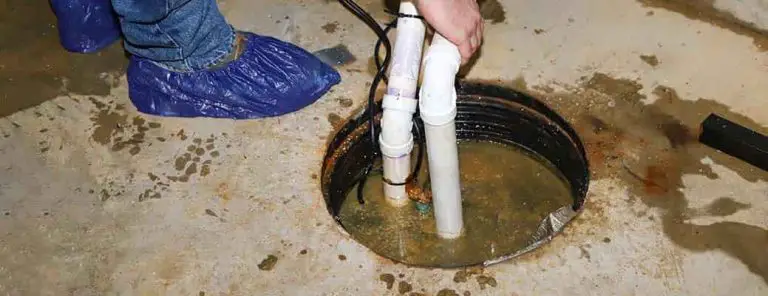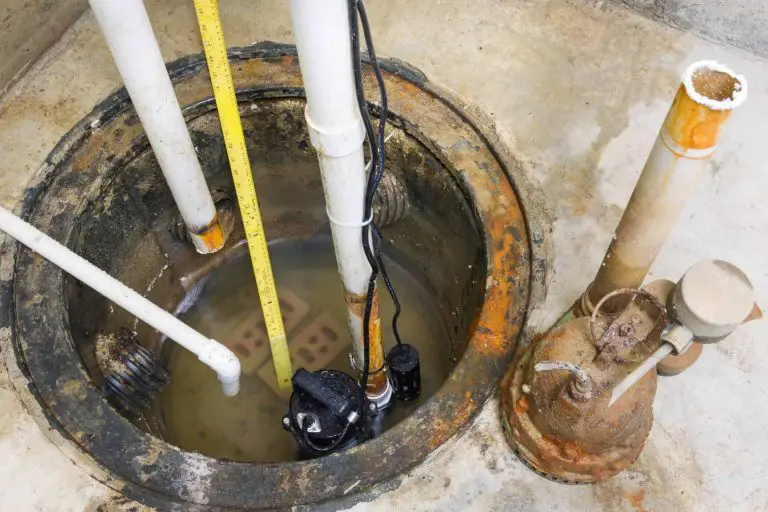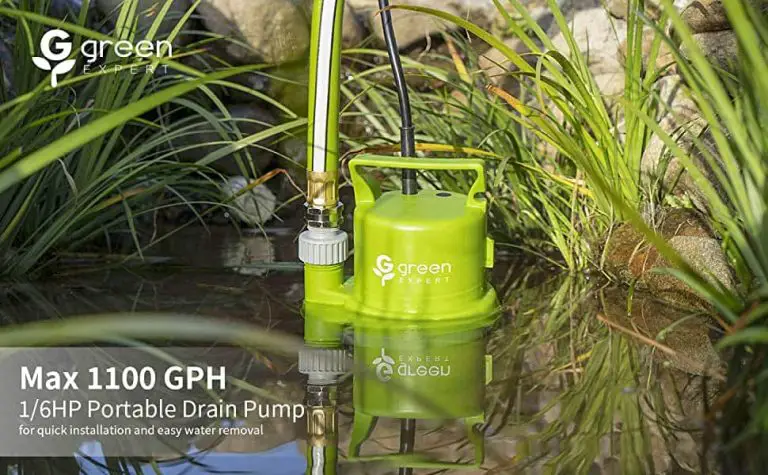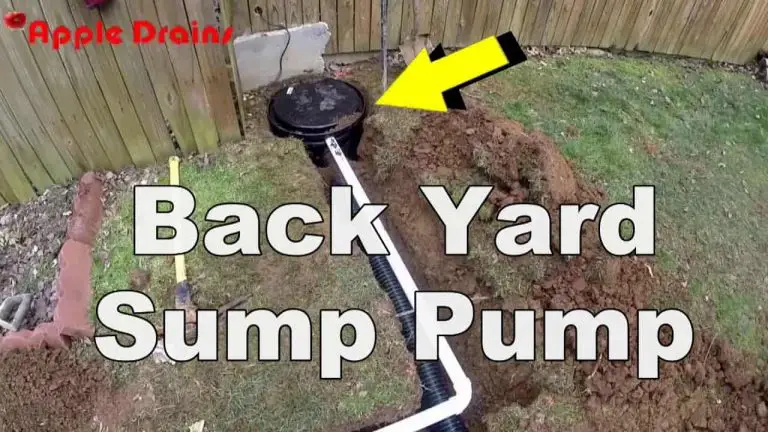How Does Water Get into the Sump Pump
Water can enter the sump pump in a variety of ways. Most commonly, water enters through the groundwater level rising and flooding the sump pit.
This is why it’s critical to have your sump pit installed below the groundwater level. Other ways water can enter the sump pit are from surface runoff during storms or from household plumbing leaks.
If your home has a sump pump, you may be wondering how water gets into it in the first place. After all, isn’t the whole point of a sump pump to keep water out of your basement? The answer is actually quite simple.
Your sump pump is located in the lowest part of your basement, which means that it is also the lowest point in your home’s drainage system. When it rains or there is snow melt, the water has nowhere else to go but into your sump pit.
Once the water level in the pit reaches a certain point, the float switch activates and turns on the pump. The pump then does its job by removing the water from the pit and discharging it away from your home. So if you’re ever wondering why your sump pump is running even though there hasn’t been any rain, now you know!
How does water get into sump pit?
Should There Be Water in My Sump Pump Pit
If you have a sump pump in your basement, you may be wondering if it’s normal for there to be water in the pit. The answer is: it depends.
First, let’s talk about what a sump pump is and does. A sump pump is installed in a pit (usually in the lowest part of your basement) and its job is to pump water out of your basement to prevent flooding.
When the water level in the pit gets too high, the float switch activates the pump and water is pumped out through a pipe to an area away from your home. Now that we know how a sump pump works, let’s talk about whether or not it’s normal for there to be water in the pit.
If your home is new or doesn’t have any history of flooding, then it’s probably not normal for there to be any water in your sump pit. In this case, you should call a plumber to take a look and see if there’s something wrong with your sump pump or if something else is causing water to enter the pit.
However, if your home has a history of flooding or you live in an area with high groundwater levels, then it’s probably normal for there to be some water in your sump pit (although it shouldn’t be completely full). In this case, as long as the float switch is working properly and activating the pump when needed, you don’t need to worry about the water level in the pit.
Avoid House With Sump Pump
If you’re in the market for a new home, you may want to avoid any houses that have sump pumps. Sump pumps are used to remove water from basements or crawlspaces that have been flooded.
While they can be effective at preventing further flooding, they can also be a source of headaches for homeowners. Sump pumps typically need to be replaced every few years, and they can be expensive to repair or replace.
They also require regular maintenance, such as cleaning out the intake screen and making sure the discharge pipe is clear. If not maintained properly, sump pumps can fail when you need them most – during a flood.
So, if you’re looking at homes with sump pumps, just be aware of the potential costs and headaches that come along with owning one. It might be worth paying a little more for a home without a sump pump!
Sump Pump Water Level
A sump pump is a device that is installed in the lowest point of a home’s foundation, in order to pump out water that has accumulated there. The water level in the sump pit should be monitored regularly, as if it gets too high, the pump will not be able to operate properly.
There are a few things that can cause the water level in a sump pit to rise: – Heavy rain or snow melt can cause an increase in groundwater levels, which will eventually make its way into the sump pit. – If there is any blockage in the discharge pipe that leads from the sump pit to the outdoors, this can cause water to back up and fill up the pit.
– A faulty or damaged sump pump can also cause problems, as it may not be able to handle the volume of water coming into the pit. If you notice that the water level in your sump pit is rising, you’ll need to take action right away.
First, check for any blockages in the discharge pipe and clear them if necessary. If everything looks clear there, then you’ll need to check on your sump pump itself.
Make sure that it is turned on and operating properly. If you’re still having issues after taking these steps, then you may need to call a professional plumber for further assistance.
Constant Water Flow into Sump Pit
If your sump pump constantly runs water into the pit, there are a few possible causes. First, check the float switch to see if it is stuck in the “on” position.
If the float switch is working properly, then the problem may be with the pump itself. It could be that the impeller is damaged or that the motor is burned out. If neither of these is the problem, then it’s possible that there is a leak in your plumbing somewhere between the sump pit and where the water enters your home.
Where Does Sump Pump Water Go
A sump pump is a device that is installed in the basement of a home. Its purpose is to remove water that has accumulated in the sump pit and to prevent flooding.
The water is typically pumped out through a pipe to the home’s exterior, away from the foundation. If your basement frequently floods or you live in an area with high groundwater levels, a sump pump may be a good solution for you.
Sump pumps are also used in homes that have finished basements, to protect against moisture damage and mold growth. There are two types of sump pumps: submersible and pedestal.
Submersible pumps are submerged in the water inside the pit, while pedestal pumps are mounted on dry land outside of it. Both types of pumps are powered by electricity and have float switches that activate them when water level rise above a certain point.
Sump pumps can be purchased at most hardware stores or online retailers. Be sure to select a pump that is appropriate for your needs (e.g., size of your basement, frequency of flooding). Installation typically requires some basic plumbing knowledge and tools; however, many hardware stores offer installation services as well.
Sump Pump Maintenance
A sump pump is a vital component of any home’s flooding protection system. A sump pump is installed in a pit or low point in a basement or crawlspace and pumps water out of the home to keep it dry.
Sump pumps are typically used in homes with basements, but they can also be used in homes without basements if there is a potential for flooding. Sump pump maintenance is important to prevent flooding and water damage in your home.
Here are some tips for maintaining your sump pump: – Check the power source: Make sure the sump pump is plugged into an outlet that is not controlled by a switch. If the power goes out, the switch could prevent the sump pump from turning on and doing its job.
– Test the float switch: Most sump pumps have a float switch that turns the pump on when water levels rise. Test this feature monthly by adding water to the pit until the float switch activates and the pump turns on.
– Clean out the pit: Periodically remove any debris, such as stones or mud, from the bottom of the pit where the sump pump is installed. This will help ensure that water can flow freely into and out of the pit, and that nothing gets caught in or damages the impeller (the part of the pump that moves water).
– Inspect discharge lines: The pipe that carries water away from your home should be checked regularly to make sure it’s not blocked or leaking. If you do find a blockage, use a plumber’s snake or other tool to clear it; if you find a leak, have it repaired by a professional immediately.
Why is There Gravel in Sump Pit
If you have a sump pit in your basement, you may have noticed that there is gravel inside of it. While it may seem strange to have gravel in your sump pit, it actually serves an important purpose.
The gravel helps to keep the pump from getting clogged with debris and dirt. Additionally, the gravel provides a place for water to collect so that the pump can more easily remove the water from your basement.

Credit: www.therooterworks.com
Where Does Water Come from in Sump Pit?
Most sump pits are located in the basement of a home, and are used to collect water that has seeped into the home through the foundation. The pit is typically filled with gravel or rocks, and has a pump that is used to remove the water from the pit and send it outside of the home.
Why is There Water Constantly Running into My Sump Pump?
If you have a sump pump, it’s normal to hear water running into it constantly. This is because the sump pump is designed to keep your basement or crawl space dry by pumping out any water that gets in.
There are two types of sump pumps: submersible and pedestal. Submersible pumps are installed inside the sump pit, and pedestal pumps are installed outside of it.
Both types of pumps work similarly, but submersible pumps are more common because they’re less likely to be damaged by flooding. Water enters the sump pit through drains or other openings in the foundation of your home.
The pit is usually located in the lowest part of the basement or crawl space, so that gravity can help push the water into it. Once the water level in the pit gets high enough, it activates a float switch which turns on the pump.
The pump then pushes the water out of the pit and away from your home through a discharge pipe. It’s normal for there to be some water left in the pit after the pump has turned off, since not all of the water can be pumped out with each cycle.
The next time rainwater or groundwater enters the pit, it will activate the pump again and start the cycle over. If you notice that your sump pump is running more often than usual or that there’s more water in your pit than usual, it could be a sign that there’s something wrong with your drainage system. You should call a plumber to come take a look and see if anything needs to be repaired or replaced.
How Do You Remove Water from a Sump Pit?
Assuming you have a sump pit and not a septic tank, there are generally two ways to remove water from a sump pit. The first is with a submersible pump that is placed in the pit itself and pumps the water out through a discharge pipe.
The second way is by using an ejector pump that pulls the water up from the pit and then pushes it out through the discharge pipe. Whichever method you choose, be sure to check your local building codes to ensure you are following all regulations.
How Much Water Should Be in My Sump Pump Pit?
A sump pump pit should have enough water to cover the intake of the pump. This is typically about 1 to 2 inches of water. The rest of the pit can be filled with gravel or other material to help keep the pump from clogging.
Conclusion
Water typically enters the sump pump through a drainage system that is installed around the perimeter of your home’s foundation. This system collects water that has seeped into your basement or crawl space and funnels it towards the sump pit.
Once the pit fills with water, the float switch activates and turns on the pump. The pump then pushes the water out of the pit and away from your home through a discharge pipe.






